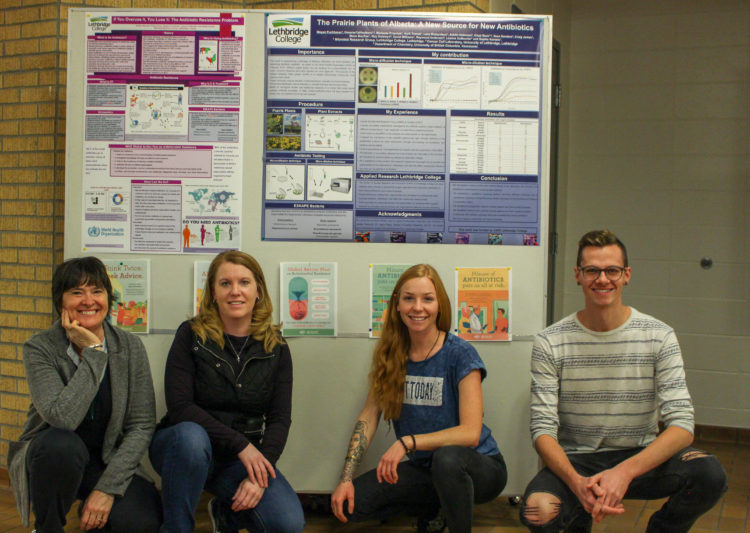Antibiotics aren’t candy and need to be used for the right reasons, says a Lethbridge College microbiology instructor and researcher.
Through disrupting the reproductive process of the microbes, antibiotics will prevent further growth of the bacteria; it doesn’t kill the bacteria, according to the World Health Organization.
According to Dr. Sophie Kernéis, Lethbridge College microbiology researcher and instructor, there is a downside to antibiotics which is antibiotic resistance, a bacteria that has mutated causing it not to be destroyed or inhibited.
In February 2018, WHO stated without immediate action, the world is heading into an era in which common infections and minor injuries can once again kill.
Last week, it was Antibiotics Awareness Week and Lethbridge College’s Microbial Research Group stood in centre core with a billboard of posters making people aware of antibiotic resistance.
Ashtin Halmrast, after-degree nursing student at the college, feels like a lot of people aren’t informed on antibiotics and believes doctors aren’t doing enough job of notifying their patients on the importance of antibiotics.
Kernéis explained it’s also very important for people to be aware of the negative effects of antibiotics.
“We need to be careful. We need to use the antibiotic for a good reason and not take it like a candy.”
The microbiology researcher says as you increase consumption of antibiotics, you also increase your chances of the antibiotic selecting an antibiotic-resistant bacteria.
Once the bacteria causes a disease, it is pretty hard to treat.
The research group at the college is doing its part by finding new antibiotics in Alberta prairie plants to treat antibiotic-resistant bacteria.
According to Kernéis, the group has identified eight plants that have antibiotic properties.
One of the processes to identify if a plant has antibiotic properties is called the diffusion method.
This technique involves growing bacteria on a plate, then you put each plant extract with the bacteria and if you see the bacteria not growing you will know the plant is preventing the growth of the bacteria.
ADVERTISEMENTThe diffusion method is the process Halmrast used during the research and she said it was her favourite experience so far.
“Honestly, it’s cool to see the results and to see which plant extracts are working and which one’s aren’t.”
The after-degree nursing student says her experience on this research group has been great and she enjoys working with Kernéis.
According to WHO, some things people can do to prevent antibiotic resistance bacteria is take all the antibiotics your doctor prescribes you, even if you’re feeling better.





